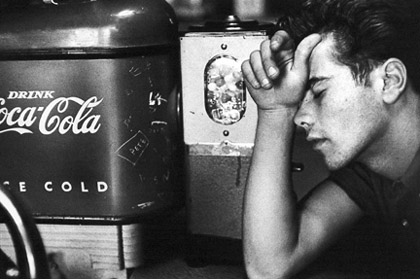This is the second post in the series on the Future of Youth Ministry. I have a degree in history and if there’s anything history teaches us, it’s this: the future is always connected to the present and the past. Events don’t ‘just happen’, they happen as a result of decisions in the present or the past. Every war known to mankind has had a history of events and decisions that led up to the ultimate decision of starting the war.
It’s the same with youth ministry: before you can predict what the future of youth ministry will bring, you have to analyze the present and the past. It will allow you to see developments, trends and significant changes.
And let’s not forget that we can learn from the past and the present, from the things that have gone wrong, the mistakes that have been made, as much as from what we’ve done right in youth ministry. Taking the time to study the past and the present is never a wasted effort.
The past of youth ministry
In a recent article in Group Magazine Greg Stier traced the early roots of youth ministry back to…Jesus and His disciples. Have you ever realized that all of the disciples were underage (20 at that time) except Peter? Jesus was a youth leader Himself! He likewise shows that Paul proposed a sort of youth ministry as well when he instructed that the older women teach the younger women (Titus 2:3-8). Since you became a ‘woman’ when you menstruated for the first time, the older women could be as young as twenty-somethings while the younger women were teens.
Obviously, much has happened since then and youth ministry has come a long way. The rise of a youth culture after the Second World War led to the rise of youth ministry, first from outside and then from inside the church. Parachurch organizations were created, Youth for Christ being one of them.

Whereas the original focus of youth ministry inside the church was mainly on activities (program-driven), in the nineties the event-driven approach slowly started to change into a more relational approach. Many youth ministries are still program-driven though.
Another big change has been the rise of youth ministry as a vocation. Youth ministers are better educated, better paid and more ‘professional’ than ever before.
3 lessons from the past of youth ministry
As I said before, studying the past of youth ministry can help us to learn from history. Here are 3 lessons I think we need to remember from the past of youth ministry:
1. Youth ministry has to change
Youth ministry has changed a lot over the years. Some of those changes were good, others turned out not to be so great. But that doesn’t mean we should reject change itself. Youth ministry has to change because the circumstances and the culture in which we do youth ministry change. What has worked in the past, doesn’t necessarily work now. Everything has an expiration date, including what we do in youth ministry.
2. There’s no ‘golden standard’ for youth ministry
No matter how much we would like to have a perfect plan, the perfect method to do youth ministry, it doesn’t exist. What you do in your youth ministry should always be related to your specific circumstances. No two churches are the same and what works in one church can’t be copy-pasted to another. You can learn from what other churches are doing, get inspired by it, you can use their ideas and materials as a basis, but you’ll always have to march to the beat of your own drummer.
3. Youth ministry needs to grow up
As Andrew Root and Kenda Creasy Dean rightly point out in The Theological Turn in Youth Ministry, youth ministry has been at the margins of the church for too long. It hasn’t been taken seriously as a ministry, also because it hasn’t taken itself seriously. It’s been considered a phase before ‘real’ ministry, a hobby of people who don’t want to grow up, a teenager-babysitting club with dodgeball as its main attraction. Never, ever in history, has youth ministry been considered an asset, a worthy contribution to the theological debate, the single best place in the church where innovation takes place. And that’s a shame, because youth ministry could be all that and maybe even more.
Resources to learn about the past of youth ministry
If you want to read up a bit on the roots and history of youth ministry in the 19th and early 20th century in the US, I recommend this post on the Youthspecialties website called What’s history go to do with it. It demonstrates for instance where the tendency to a doing-stuff-ministry comes from historically. There’s also an excellent overview of youth ministry history in the UK online. As expected, Wikipedia has a section on the history of youth ministry as well. You can also read on the whole history of protestant youth ministry in America in the book When God Shows Up. A very interesting read…
Tomorrow we’ll take a deeper look at the present state of youth ministry to see what youth ministry looks like right now. Do you see other lessons from the past of youth ministry that we need to remember?
Leave A Comment